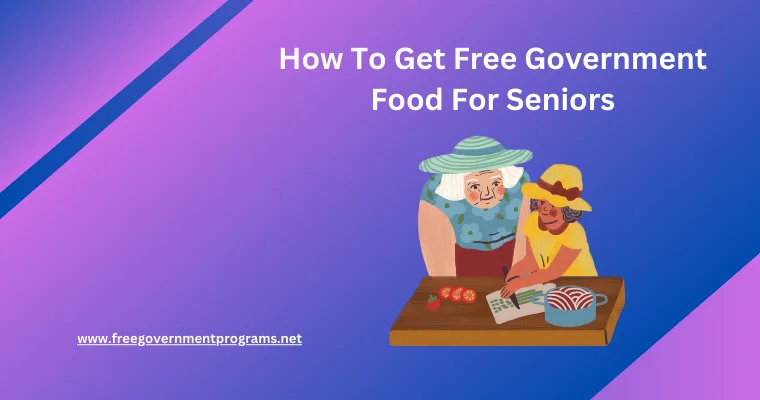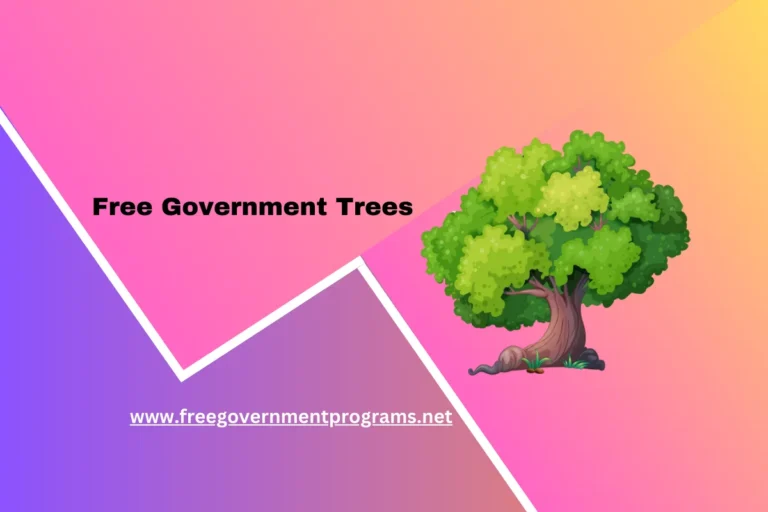Free Government Food For Seniors – Get Support You Deserve
Today, 1 in 6 seniors are at risk of going hungry. For certain elderly individuals, it becomes quite challenging to purchase nutritious food, given their restricted financial resources. Further, it can also be challenging to go grocery shopping due to their reduced mobility. Largely, it is because they are not aware of the numerous excellent senior food aid programs. Therefore, a number of Programs are available of Free Government Food For Seniors and offer food delivery services.

The government of the US has launched a number of initiatives to give seniors free food aid. It enables them to maintain a balanced diet even in the face of financial hardship. Additionally, there are many excellent public and private food aid programs available to guarantee that older people obtain sufficient and healthy nourishment. Furthermore, they distribute food to homebound elderly and offer cash support to those in need.
Types of Senior Food Program
Senior meal programs come in a variety of forms. These are a few of the most typical ones:
- A federal program is called the Commodity Supplemental Food Program (CSFP). It offers monthly food boxes to seniors sixty years of age and above.
- Monthly food boxes from nearby food banks participate in senior food box initiatives. In addition, these consist of cereal, juice, tinned food, and chilled cheese.
- Seniors can get free food at senior food pantries. Additionally, a lot of food pantries and banks offer older citizens extended hours.
- Meals on Wheels programs in your community, food pantries, and food banks can transport food to your home. To be eligible, you might have to fulfill certain lifestyle or economic conditions.
- Farmer’s markets for seniors facilitate the purchase of fruits and vegetables from nearby farmer’s markets. Meanwhile, these initiatives might hold a farmer’s market or distribute coupons.
- Food will be delivered by senior mobile pantries to senior centers and other community venues.
- SNAP gives you extra money every month to spend on food at your preferred retailers.
List Of Free Government Food Programs For Seniors:
Here are a few programs for seniors to get funds and free food.
Meals On Wheels
The most well-known food aid program in the US, Meals on Wheels, offers more than 5,000 programs. Every day, they provide well over a million meals. People who are homebound can receive it directly or at a congregate location.
Volunteers staff, the majority of local Meals on Wheels branches, and their costs vary depending on where they are located. Occasionally, the county or the city oversees them.
Medicaid Food Programs
Every state manages Medicaid, a program that provides health care assistance. Meanwhile, seniors who are eligible for Medicaid are often also eligible for Food Stamps or SNAP benefits. Medicaid is related to senior food assistance programs.
It enables seniors to obtain free or minimally-cost assessments, treatment, and care for conditions related to nutrition. Additionally, these diagnoses affect meal preparation and food delivery businesses.
Food Stamps (Supplemental Nutrition Assistance Program)
The Supplemental Nutrition Assistance Program (SNAP), formerly known as Food Stamps, offers financial support for groceries. Each county in a state handles food Stamp applications, but each county follows different procedures. However, some counties have a separate SNAP office. The Department of Social Services is responsible for processing applications in the meantime.
Seniors with restricted mobility may assign a caregiver to fill out the application and buy groceries using the SNAP card. Likely, seniors will automatically be eligible for food stamps if they are eligible for Medicaid.
Senior Nutrition Program At Farmers’ Markets
The Senior Farmers’ Market Nutrition Program (SFMNP) always dominates in giving states grants. They allocate funds to the areas where each community most needs them. Furthermore, the fund proceeds to assist older adults by giving them access to the healthiest eating options.
Meanwhile, older people will receive coupons or vouchers that they can redeem for food at any participating farm stand, local farmers’ market, or directly from a participating farmer. You can purchase honey, herbs, and fresh food at these sites using coupons.
The Commodity Supplemental Food Program (CSFP)
A USDA program for seniors with limited incomes is called the Commodity Supplemental Food Program (CSFP). Its goal is to allow older people to choose between their basic requirements and food. One of the most effective ways for federal agencies to distribute food is to use funds to produce and farm food in the United States.
Although this approach does not offer a full meal, it does emphasize the nutrients like protein, calcium, magnesium, and fiber that older people frequently lack. The nationally administered CSFP gives states funding and food.
How To Get Free Government Food For Seniors
- Verify Your Eligibility
Determining your eligibility is the first step in using free government food programs. A number of variables, such as household size, age, and income, may impact eligibility.
- Apply To The Program
Seniors who have been verified as eligible can apply for appropriate programs. Typically, this entails completing an application.
- Give The Necessary Documentation
It may be necessary for applicants to submit supporting papers for their eligibility, such as identity, proof of income, and other pertinent records.
- Go To The Local Help Desks
For information on available programs, local community centers, senior centers, and social service agencies are excellent sources. Therefore, seniors who would like help with the application procedure or would like more information about the alternatives can visit these offices.

Conclusion
It is a fundamental right for seniors to have access to wholesome meals. Thus, government initiatives work to guarantee that they can age with dignity and in good health. Additionally, these initiatives help to improve the health of our aging population by being aware of the government food programs for seniors.
The Program’s top priority is to meet seniors’ nutritional needs so they can enjoy happy, healthy lives. Other than that, the government and related associations allow seniors to get free services and funds for food.
Frequently Asked Questions (FAQs):
Who Is Eligible For The CSFP?
The Commodity Supplemental Food Program (CSFP) primarily focuses on age and income to determine eligibility. Therefore, CSFP intended to help seniors with low incomes who are 60 years of age or older. State-specific eligibility requirements may differ. Individuals with low incomes are often assisted with income thresholds.
How Do I Apply For The CSFP?
People can take the following actions to apply for the CSFP.
- Verify that you meet the program’s age and income requirements by checking your eligibility.
- Speak with the community group or local CSFP agency in charge of running the program in your region.
- Get the CSFP application and fill it out. It might be obtainable in person in the neighborhood agency or online.
- Be ready to present the required paperwork, which may include verification of residency, income, and age.
- Following submission. Upon acceptance, you will be placed in the CSFP.
What Kind Of Food Is Included In The Monthly Box?
The monthly CSFP food package usually includes healthy goods. A monthly box’s main intend is to help eligible seniors with necessary supplements in their meals.
- Fruits and vegetables in cans
- foods high in protein, such as canned fish, poultry, or beef
- dairy goods like cheese and milk with a shelf life
- Cereals and grains
- Juices from fruits
The exact meals offered can differ depending on the area and in accordance with the standards established by the United States Department of Agriculture (USDA).
Is The CSFP Available In All States?
In all states, the Commodity Supplemental Food Program (CSFP) is accessible as a federal program. Meanwhile, there may be variations in the execution of the program. People can get in touch with the state or local organization in charge of running the CSFP in order to learn more about its availability and specifics.
Social assistance agencies, neighborhood associations, and state government websites are common places to find this information.





